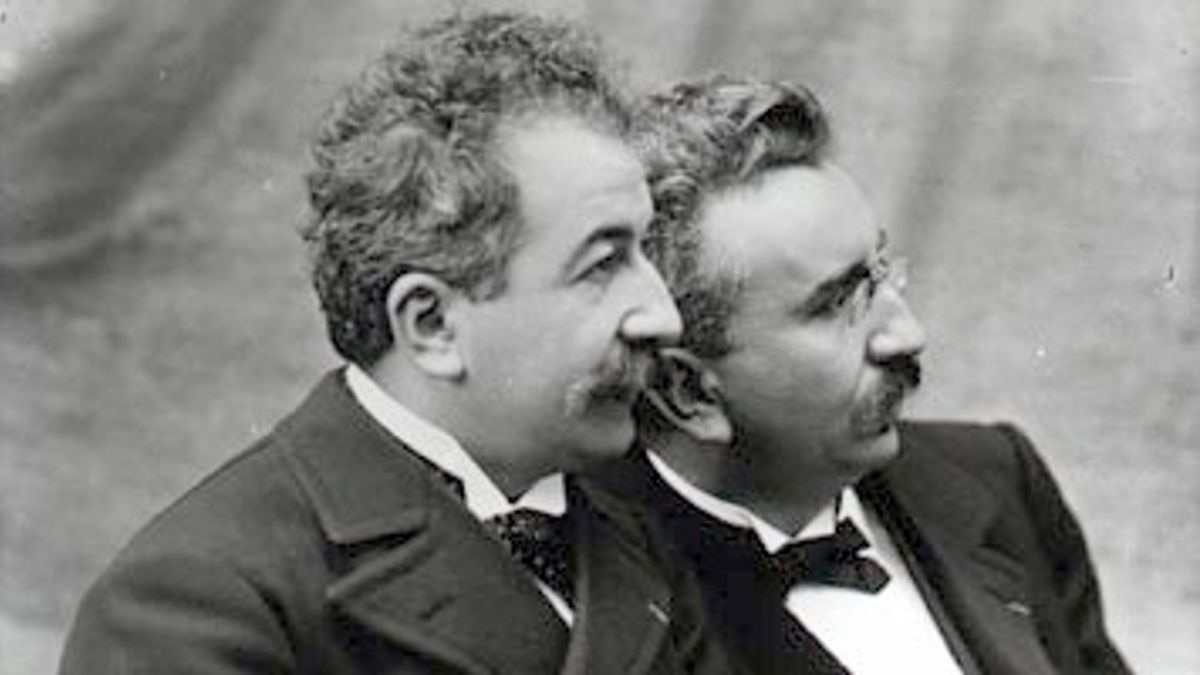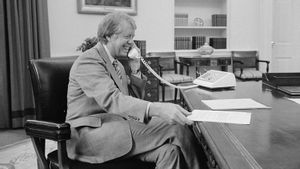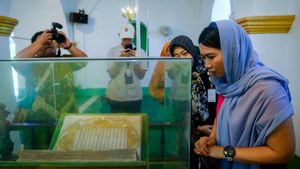JAKARTA - On December 28, 1895, for the first time the screening of a film for commercial purposes took place. The screening of the film was carried out at the Grand Cafe, Paris, France. The film being screened was made by brothers Louis and Auguste Lumiere.
The two developed a camera projector called the Cinematographe. The Lumiere brothers launched their invention to the public in March 1895 with a short film showing workers leaving the Lumiere factory.
The film was then screened for a fee on December 28, 1895. This is what became the pioneer of cinema as we know it today.
The two brothers then opened a theater - or better known as a cinema - in 1896 to show their work. They also have a crew of cameramen and send them around the world to show films and shoot new material.

Louis and Auguste Lumiere have an entrepreneurial spirit inherited from their father, Charles-Antoine Lumiere. Auguste founded a small factory that produced photographic plates.
Although Louis and his younger sister worked from 5 a.m. to 11 p.m., the factory continued to be on the verge of bankruptcy.
When Auguste returned from military service, he and Louis designed the machines needed to automate their father's plate production and designed a new plate which was very successful. By 1884, the factory employed a dozen workers.
Film technology developmentCiting History, film technology has its roots in the early 1830s, when Joseph Plateau and Simon Stampfer jointly developed a device called the phenakistoscope. The device combines a rotating disc with slots through which a series of images can be viewed, creating the effect of a moving image.
The phenakistoscope, which is considered the forerunner of modern film, was followed by advancements over the decades. In 1890, Thomas Edison and his assistant, William Dickson, developed the first moving image camera, called the Kinetograph.
The following year, 1891, Edison invented the Kinetoscope, a machine with a peephole display. The machine allows one person to watch a piece of film as it moves through the light.

After that, America experienced the development of film so fast. In 1896, Vitascope Hall, believed to be the first theater in the United States, opened in New Orleans.
In 1909, The New York Times published its first review of a film, DW Griffith's Pippa Passes. In 1911, the first Hollywood film studio opened and in 1914, Charlie Chaplin made his big screen debut.
Meanwhile in Indonesia, the concept of cinema was known in 1900. At that time, Indonesian people were still colonized by the Dutch.
Quoting Kompas, the screening of the film was held at Pasar Gambir Square or now Monas. The first film that was screened at that time was a documentary about the king and queen of the Netherlands.
In addition, at that time the film was still silent. No dialogue. Ticket prices are divided into three classes, namely class 1 for two guilders, class 2 for one guilder, and class 3 for half a guilder.
*Read other information about TODAY's HISTORY or read other interesting articles from Putri Ainur Islam.
TODAY'S HISTORY MoreThe English, Chinese, Japanese, Arabic, and French versions are automatically generated by the AI. So there may still be inaccuracies in translating, please always see Indonesian as our main language. (system supported by DigitalSiber.id)










